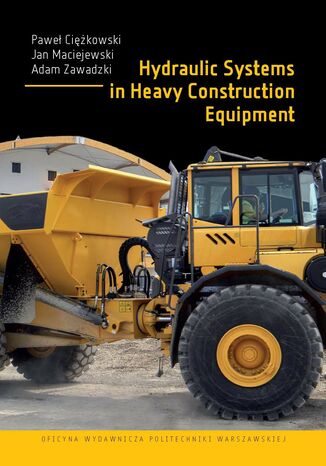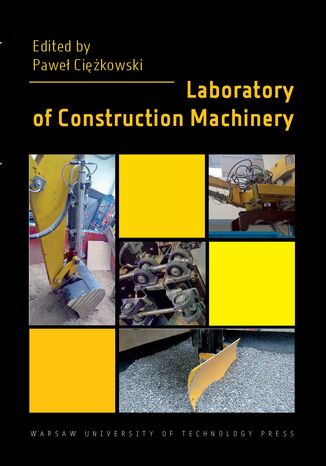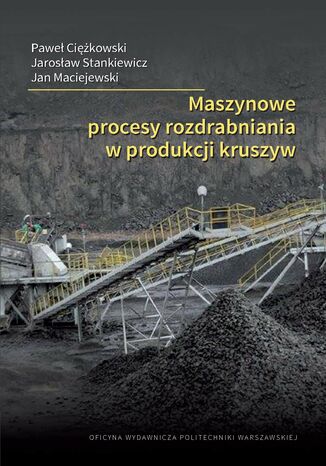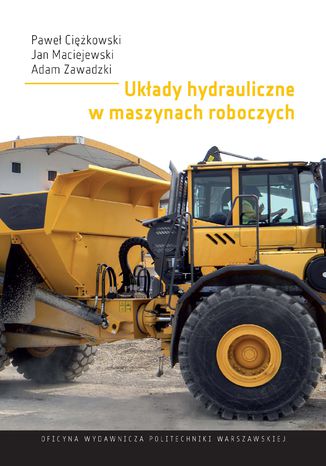Categories
-
- Bitcoin
- Businesswoman
- Coaching
- Controlling
- E-business
- Economy
- Finances
- Stocks and investments
- Personal competence
- Computer in the office
- Communication and negotiation
- Small company
- Marketing
- Motivation
- Multimedia trainings
- Real estate
- Persuasion and NLP
- Taxes
- Social policy
- Guides
- Presentations
- Leadership
- Public Relation
- Reports, analyses
- Secret
- Social Media
- Sales
- Start-up
- Your career
- Management
- Project management
- Human Resources
-
- Architektura i wnętrza
- Health and Safety
- Biznes i Ekonomia
- Home and garden
- E-business
- Ekonomia i finanse
- Esoterecism
- Finances
- Personal finance
- Business
- Photography
- Computer science
- HR & Payroll
- For women
- Computers, Excel
- Accounts
- Culture and literature
- Scientific and academic
- Environmental protection
- Opinion-forming
- Education
- Taxes
- Travelling
- Psychology
- Religion
- Agriculture
- Book and press market
- Transport and Spedition
- Healthand beauty
-
- Office applications
- Data bases
- Bioinformatics
- IT business
- CAD/CAM
- Digital Lifestyle
- DTP
- Electronics
- Digital photography
- Computer graphics
- Games
- Hacking
- Hardware
- IT w ekonomii
- Scientific software package
- School textbooks
- Computer basics
- Programming
- Mobile programming
- Internet servers
- Computer networks
- Start-up
- Operational systems
- Artificial intelligence
- Technology for children
- Webmastering
-
- Antology
- Ballade
- Biographies and autobiographies
- For adults
- Dramas
- Diaries, memoirs, letters
- Epic, epopee
- Essay
- Fantasy and science fiction
- Feuilletons
- Work of fiction
- Humour and satire
- Other
- Classical
- Crime fiction
- Non-fiction
- Fiction
- Mity i legendy
- Nobelists
- Novellas
- Moral
- Okultyzm i magia
- Short stories
- Memoirs
- Travelling
- Narrative poetry
- Poetry
- Politics
- Popular science
- Novel
- Historical novel
- Prose
- Adventure
- Journalism, publicism
- Reportage novels
- Romans i literatura obyczajowa
- Sensational
- Thriller, Horror
- Interviews and memoirs
-
- Archeology
- Bibliotekoznawstwo
- Cinema studies
- Philology
- Polish philology
- Philosophy
- Finanse i bankowość
- Geography
- Economy
- Trade. World economy
- History and archeology
- History of art and architecture
- Cultural studies
- Linguistics
- Literary studies
- Logistics
- Maths
- Medicine
- Humanities
- Pedagogy
- Educational aids
- Popular science
- Other
- Psychology
- Sociology
- Theatre studies
- Theology
- Economic theories and teachings
- Transport i spedycja
- Physical education
- Zarządzanie i marketing
-
- Health and Safety
- History
- Road Code. Driving license
- Law studies
- Healthcare
- General. Compendium of knowledge
- Academic textbooks
- Other
- Construction and local law
- Civil law
- Financial law
- Economic law
- Economic and trade law
- Criminal law
- Criminal law. Criminal offenses. Criminology
- International law
- International law
- Health care law
- Educational law
- Tax law
- Labor and social security law
- Public, constitutional and administrative law
- Family and Guardianship Code
- agricultural law
- Social law, labour law
- European Union law
- Industry
- Agricultural and environmental
- Dictionaries and encyclopedia
- Public procurement
- Management
-
- Africa
- Albums
- Southern America
- North and Central America
- Australia, New Zealand, Oceania
- Austria
- Asia
- Balkans
- Middle East
- Bulgary
- China
- Croatia
- The Czech Republic
- Denmark
- Egipt
- Estonia
- Europe
- France
- Mountains
- Greece
- Spain
- Holand
- Iceland
- Lithuania
- Latvia
- Mapy, Plany miast, Atlasy
- Mini travel guides
- Germany
- Norway
- Active travelling
- Poland
- Portugal
- Other
- Przewodniki po hotelach i restauracjach
- Russia
- Romania
- Slovakia
- Slovenia
- Switzerland
- Sweden
- World
- Turkey
- Ukraine
- Hungary
- Great Britain
- Italy
-
- Philosophy of life
- Kompetencje psychospołeczne
- Interpersonal communication
- Mindfulness
- General
- Persuasion and NLP
- Academic psychology
- Psychology of soul and mind
- Work psychology
- Relacje i związki
- Parenting and children psychology
- Problem solving
- Intellectual growth
- Secret
- Sexapeal
- Seduction
- Appearance and image
- Philosophy of life
-
- Bitcoin
- Businesswoman
- Coaching
- Controlling
- E-business
- Economy
- Finances
- Stocks and investments
- Personal competence
- Communication and negotiation
- Small company
- Marketing
- Motivation
- Real estate
- Persuasion and NLP
- Taxes
- Social policy
- Guides
- Presentations
- Leadership
- Public Relation
- Secret
- Social Media
- Sales
- Start-up
- Your career
- Management
- Project management
- Human Resources
-
- Antology
- Ballade
- Biographies and autobiographies
- For adults
- Dramas
- Diaries, memoirs, letters
- Epic, epopee
- Essay
- Fantasy and science fiction
- Feuilletons
- Work of fiction
- Humour and satire
- Other
- Classical
- Crime fiction
- Non-fiction
- Fiction
- Mity i legendy
- Nobelists
- Novellas
- Moral
- Okultyzm i magia
- Short stories
- Memoirs
- Travelling
- Poetry
- Politics
- Popular science
- Novel
- Historical novel
- Prose
- Adventure
- Journalism, publicism
- Reportage novels
- Romans i literatura obyczajowa
- Sensational
- Thriller, Horror
- Interviews and memoirs
-
- Philosophy of life
- Interpersonal communication
- Mindfulness
- General
- Persuasion and NLP
- Academic psychology
- Psychology of soul and mind
- Work psychology
- Relacje i związki
- Parenting and children psychology
- Problem solving
- Intellectual growth
- Secret
- Sexapeal
- Seduction
- Appearance and image
- Philosophy of life
Hydraulic Systems in Heavy Construction Equipment
Paweł Ciężkowski, Jan Maciejewski, Adam Zawadzki
Książka jest angielskojęzycznym odpowiednikiem opracowania - Układy hydrauliczne w maszynach roboczych (OWPW, Warszawa 2021) The authors of the publication entitled "Hydraulic systems in heavy construction equipment", want to acquaint students of mechanical faculties and operators of working and construction machinery with the fundamental knowledge of the designing of hydraulic systems, both their cylinders and control elements. The manuscript presents information on hydrokinetic and hydrostatic hydraulic systems. The work discusses the basic components of hydraulic systems used in working machinery, in particular: hydraulic pumps and motors, cylinders, valves, directional control valves, accumulators. Chapter one of this book discusses the basic hydraulic components used in working machinery, their functions, purpose and presents basic calculations. Chapter two presents basic information on open, closed, constant output and constant power hydraulic systems. The ways of controlling the systems are discussed on the basis of hydraulic system diagrams. Chapter three presents current trends in drive systems used in working machines, i.e.: the driving mechanism, the turning mechanism, the rotation mechanism of the working attachment, and discusses the system of cooperation of the hydraulic cylinder with the working attachment working in the crank and lever system (chapter four). The manual presents a method for determining the forces and moments acting on work attachments generated by hydraulic cylinders (force) and hydraulic motors (torque). Chapter five is devoted to specialized control systems for work attachments in construction machinery. Chapter six presents basic information on maintenance and operation of hydraulic systems of working machinery, i.e.: unloading hydraulic systems, deaerating hydraulic systems, performing daily maintenance, replacing hydraulic components.
Laboratory of Construction Machinery
In this script, the laboratory exercises presented are divided into two groups. In the fi rst group, the authors describe the stands and test methods to determine the basic strength parameters of soils and rocks. The stands discussed allow students to become familiar with model processes of interaction of construction machinery tools with geomaterials and road surface materials (asphalt, concrete). The model investigations are concerned with elementary rock fragmentation processes and the interaction of crushing tools in the milling process of road surfaces. Exercises on machine-based crushing processes will be presented. Within this group of exercises, students will become familiar with the construction and operation of various types of crushers (cone, impact, jaw). The exercises will include studies of: a) the influence of the type of crusher on the shape and grain size of the product obtained, b) the influence of the outlet gap setting on the forces, energy consump-tion and effi ciency of the crushing process, c) the infl uence of the shape of jaw crusher crushing plates on the parameters of the crushing process. The second group of exercises deals with construction and transport machinery, their construction and operation. The exercises are aimed with the problems of interaction of tools with the soil. On the laboratory stand "soil channel", exercises will be presented to study the interaction of model tools of earth-moving construction machinery such as: loader bucket blade, excavator, scraper basket. The exercises will include the determination of cutting forces and work and the determina-tion of deformation mechanisms. The soil channel described in the paper allows students to fami-liarise themselves with the interaction of the driving system with the ground. The exercises will include determining the characteristics of the interaction of the crawler with the ground, investiga-ting changes in the tractive force of the machine as a function of slippage and the weight of the machine. Within the laboratory, exercises will be performed on a unique stand of a single-head hydraulic backhoe excavator, whose control and data acquisition system is fully automated. By performing the exercise on the single-head excavator, students will study selected methods for calculating cutting forces, the eff ect of excavator bucket shape and digging trajectory on cutting forces. The next stand is a rotating mechanism, where students can familiarise themselves with the properties of hydraulic drive systems using a hydraulic piston motor as an example, and the influence of the gain of individual controller components on system properties and speed control error. The script also includes a stand to learn about a typical PLC structure and the programme structure and programming method. Information on the theory of vibratory conveyor of granular materials is also presented in this study.
Maszynowe procesy rozdrabniania w produkcji kruszyw
Paweł Ciężkowski, Jarosław Stankiewicz, Jan Maciejewski
Podręcznik przeznaczony dla studentów wydziałów mechanicznych, w których programach studiów przewidziano wiadomości z zakresu kruszyw, ich cech fizycznych i mechanicznych oraz maszyn do produkcji i sortowania kruszyw. Podręcznik obejmuje wiadomości dotyczące historii, ogólnej budowy maszyn, zastosowania, parametrów eksploatacyjnych, zasad bezpiecznej pracy maszynami oraz przedstawia przegląd obecnie stosowanych kruszarek, maszyn i urządzeń rozdrabniających. W pierwszym rozdziale przedstawiono zarys historyczny maszyn rozdrabniających. Rozdział drugi poświęcony jest charakterystyce materiałów przeznaczonych do rozdrabniania i zawiera podstawowe informacje o kruszywach oraz ich cechach fizycznych i mechanicznych. W kolejnych dwóch rozdziałach przedstawiono podstawowe maszyny i narzędzia służące do produkcji kruszyw, czyli kruszarki szczękowe, stożkowe, udarowe i walcowe oraz specjalistyczny osprzęt rozdrabniający stosowany w maszynach roboczych (łyżki rozdrabiające, łyżki przesiewająco-rozdrabiające, nożyce hydrauliczne tnąco-kruszące, głowice frezujące). Przy omawianiu maszyn przedstawiono podstawowe informacje dotyczące budowy, ich zastosowania i parametrów eksploatacyjnych. W rozdziale piątym przedstawiono przykładowe linie procesu technologicznego w zakładzie do produkcji i uszlachetniania kruszywa oraz zasady doboru maszyn. W podręczniku przedstawiono podstawowe informacje z zakresu automatyzacji, eksploatacji maszyn oraz zasad bhp obowiązujących przy pracy maszynami rozdrabniającymi.
Układy hydrauliczne w maszynach roboczych
Paweł Ciężkowski, Jan Maciejewski, Adam Zawadzki
W podręczniku przedstawiono informacje na temat układów hydraulicznych hydrokinetycznych i hydrostatycznych. Omówiono podstawowe elementy układów hydraulicznych stosowane w maszynach roboczych, a w szczególności: pompy i silniki hydrauliczne, cylindry, zawory, rozdzielacze i akumulatory. Opisano obiegi oleju w układach otwartych i zamkniętych oraz układy o stałej mocy, wydajności i układy typu „Load Sensing”. Przedstawiono podstawowe zabezpieczenia stosowane w układach hydrostatycznych maszyn roboczych. Podano przykłady układów hydraulicznych, w których współpracuje kilka członów napędu hydraulicznego (pomp, silników, cylindrów hydraulicznych), a także przykłady synchronizacji ruchu cylindrów hydraulicznych. W publikacji omówiono ogólne zasady sterowania i regulacji w układach hydraulicznych, a na przykładach przedstawiono różne systemy sterowania, omawiając jednocześnie elementy sterujące w układach hydraulicznych oraz układy ich połączeń w napędach hydraulicznych.




